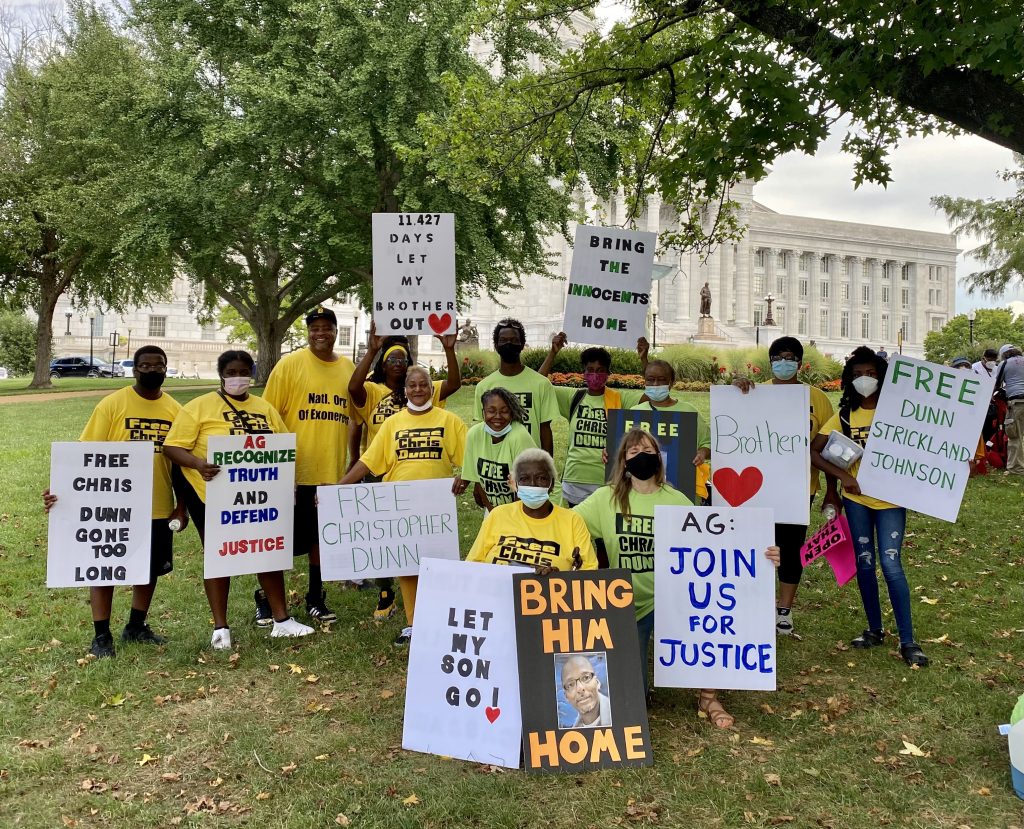
27 Oct Christopher Dunn Series: A Brief Introduction
Christopher Dunn is a convicted murderer. He also might be innocent. In fact, according to the last judge to weigh in on Mr. Dunn’s guilt, Missouri Circuit Court Judge William Hickle, it’s hard to imagine that any judge would convict him at this point: “This Court does not believe that any jury would now convict Christopher Dunn.” Yet, as Chris Pomorski put it in this piece he did for The New Republic earlier this year, for Mr. Dunn, “[i]nnocence alone” “[i]sn’t enough.”
Mr. Dunn’s innocence claim has all the same features that make the innocence claims of high-profile exonerees so compelling. Physical evidence connecting him to the crime? There was none. Alibi witnesses? There were plenty. But none were called at trial. An aggressive defense attorney? Mr. Dunn had an experienced attorney. But she left witnesses uninterviewed, evidence unreviewed and huge questions unasked and unanswered. In other words, Christopher Dunn’s case is the kind of story you’d expect to hear about on a podcast or watch on Netflix.
But if you’re anything like me, you listened to Serial or watched Making a Murderer and were left with doubts. “There’s no way a jury would convict Steven Avery with all these questions,” I’d tell myself during a late-night Netflix binge back in late 2015. “It seems like he’s innocent, but there’s still a chance he is guilty, right?” I’d rhetorically ask myself as I listened to Sarah Koenig in my office at work. “I just want to see what the jury saw and make up my own mind.” That’s how I felt. And I’m willing to bet that’s how some of you felt too.
In this series on Christopher Dunn, I hope to give you a chance to do just that.

Interrogating Justice’s Three-Article Series on Christopher Dunn
Starting tomorrow, Interrogating Justice will publish my three-article series on the case against Christopher Dunn. Every Friday for the next three weeks, I’ll give you a chance to hear the prosecution’s version of events, to see what the jury saw (and didn’t see) and to understand how the presumption of innocence and the guilty-beyond-a-reasonable-doubt standard actually work in courtrooms across the U.S.
My three-article series breaks down like this…
- Tomorrow, IJ will publish Christopher Dunn Series Part I: The Prosecution’s “Case”. In this beginning article, I’ll show you the prosecution’s version of events. Literally. You can read, verbatim, the prosecutor’s opening, closing and rebuttal arguments at Mr. Dunn’s 1991 trial in St. Louis, Missouri. Then you can use that version of events to decide whether the prosecutor really proved the case against Mr. Dunn beyond a reasonable doubt.
- Next week, IJ will publish Christopher Dunn Series Part II: Let’s See the Evidence. In this second article, I’ll show you everything the jury saw at Mr. Dunn’s trial 30 years ago. I’ll also show you everything that the jury didn’t get to see but may have made a difference. And I’ll explain what evidence remains, to use the prosecutor’s go-to word, “uncontradicted.”
- Finally, IJ will publish Christopher Dunn Series Part III: The Presumption of Innocence. In the final article of the series, I’ll show you why, legally speaking, none of this—including Mr. Dunn’s innocence—actually matters. This article will focus on how the presumption of innocence and the guilty-beyond-a-reasonable-doubt standard really apply in the U.S.
To follow my series on Christopher Dunn, visit the Interrogating Justice homepage or search Christopher Dunn on our website. To learn more about Christopher Dunn and and support his fight for justice, you can also visit the Support page on the Justice for Christopher Dunn website.

